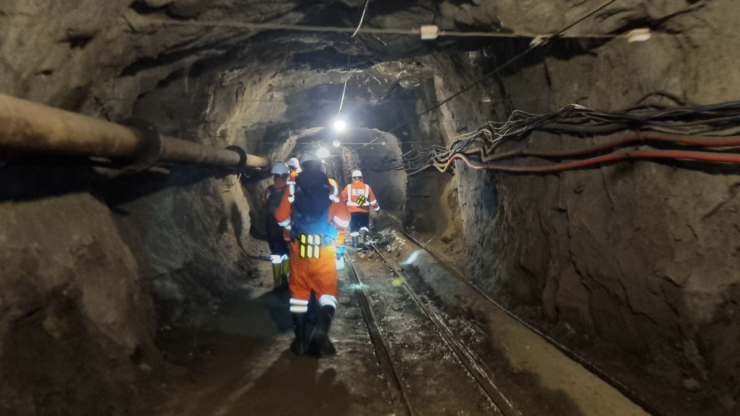Natural Hydrogen – Researchers have discovered a massive spring of hydrogen, bubbling out of a deep mine in Albania.
Researchers have discovered a massive spring of hydrogen, bubbling out of a deep mine in Albania. Although it may not be economical to exploit, the surprisingly high flow of the gas is likely to raise interest in the emerging field of natural hydrogen, the overlooked idea that Earth itself could be a source of the clean-burning fuel.
Frieder Klein, a geochemist at the Woods Hole Oceanographic Institution, said:
These deposits have been ignored by the oil and gas industry for a very long time.
“This goes in the right direction.”
🔥 What about we co-host a webinar? Let's educate, captivate, and convert the hydrogen economy!
Hydrogen Central is the global go-to online magazine for the hydrogen economy, we can help you host impactful webinars that become a global reference on your topic and are an evergreen source of leads. Click here to request more details
One takeaway from the discovery, published today in Science, is that hydrogen seems to be more ubiquitous than once imagined, says Michael Webber, an energy systems researcher at the University of Texas at Austin. “If you look for it, you’ll find it,” he says. “It could really disrupt geopolitics, and in many good ways, because the hydrogen will be where the oil and gas are not.”
Governments are investing billions of dollars to make “green hydrogen” by using renewable energy to break down water. The aim is to replace fossil fuels in industries such as steelmaking and fertilizer production, and in heavy transportation. But extracting hydrogen from naturally occurring deposits underground might be cheaper–if enough trapped gas exists.
For decades, experts were doubtful. They thought the gas, energy-rich and reactive, would either be gobbled up by microbes or chemically converted to other forms. That view is now changing: Hints from old well logs and puzzling surface seeps sometimes called “fairy circles” suggest the crust may hold significant amounts of hydrogen. Startup companies are now prospecting for it around the world.
But data in the field are fuzzy and hard to come by. The Bulqizë mine in Albania gave researchers a chance to make measurements in a more controlled environment. The mine, one of the world’s largest sources of chromium, sits within rocks called ophiolites, created when tectonic plates of dense ocean rock get thrust up on land instead of plunging into the mantle. The Albanian rocks were shoved into place tens of millions of years ago, when Africa collided with Europe and closed an ancient sea.
Hydrogen hunters are interested in ophiolites because they contain iron-rich rocks from the upper mantle. Water can react with these rocks at high temperatures and pressures to produce significant quantities of hydrogen. The flammable gas was already known to leak into the Bulqizë mine, which has experienced three major explosions, one of them deadly, since 1992.
Laurent Truche, a geochemist at Grenoble Alps University, and colleagues gained access to the mine and traced the flows to their source. Deep in the mine, nearly 1 kilometer down, they discovered a churning pool of water, a place they would come to call “the jacuzzi.” Truche shined his headlamp onto bubbles that turned out to be 84% hydrogen–an incredibly pure source.
I realized afterward that what I’d done in this pool was very dangerous. The light was not explosion-proof at all, and my head was right above this bubbling spring.
On its own, the jacuzzi was pumping out 11 tons of hydrogen per year, Truche and colleagues calculated. Based on air samples in other shafts and caverns, they believe the mine is releasing a total of 200 tons of hydrogen per year—enough to fill the Hindenburg zeppelin 10 times over. That flux is about 1000 times greater than those documented from ophiolites in other places, such as Oman,
Yashee Mathur, a graduate student in energy science and engineering at Stanford University who is studying natural hydrogen:
We need more of these kinds of intentional measurements.
Although the flow is large, the total amount of hydrogen stored beneath the mine may be modest. Truche and colleagues believe the hydrogen emissions began when a mine shaft punctured a fault zone that holds pockets of trapped gas. Based on estimates of the fault zone’s size, the researchers say it could hold from 5000 to 50,000 tons of hydrogen. Mathur says that’s probably not worth trying to tap commercially. Prospectors should be aiming for hydrogen deposits of 10 million tons or more, according to a recent natural hydrogen grant funding announcement from the U.S. Department of Energy’s Advanced Research Projects Agency-Energy. Global hydrogen demand today is about 100 million tons per year.
Still, Truche says, the flow of hydrogen might be enough to harvest and use on site. “For the moment [mine managers] are trying to get rid of hydrogen,” he says. “In fact, it may be possible to collect this hydrogen and use it in a gas turbine.”
More importantly, the mine’s spring underscores that natural hydrogen is real and that ophiolites might be a good place to begin hunting for it.
Klein, says:
“Because there are numerous outcrops of such rocks around the globe,”
“the next thought would be, we should really be checking out each and every one of those deposits and then see if there is a similar outgassing of hydrogen that we can possibly mine.”
READ the latest news shaping the hydrogen market at Hydrogen Central
Natural Hydrogen – Researchers have discovered a massive spring of hydrogen, bubbling out of a deep mine in Albania. source








